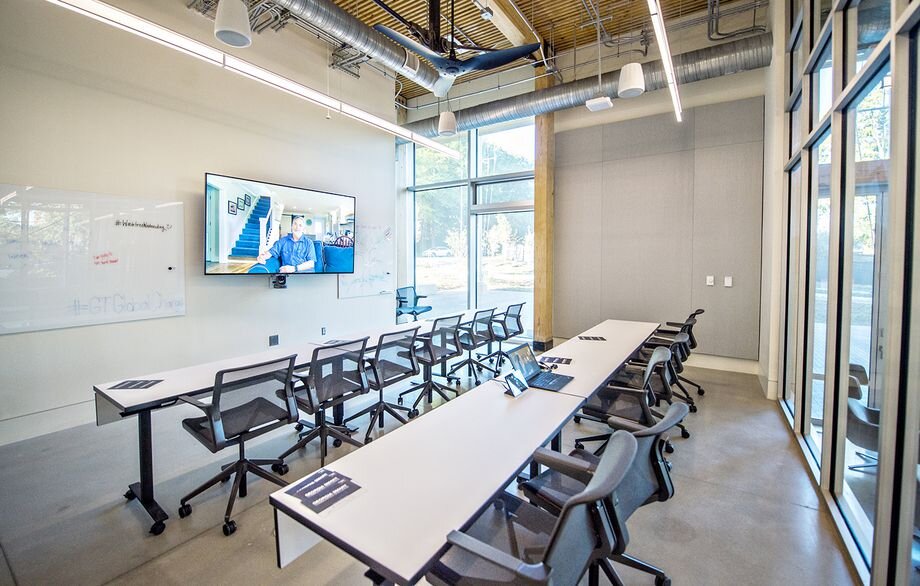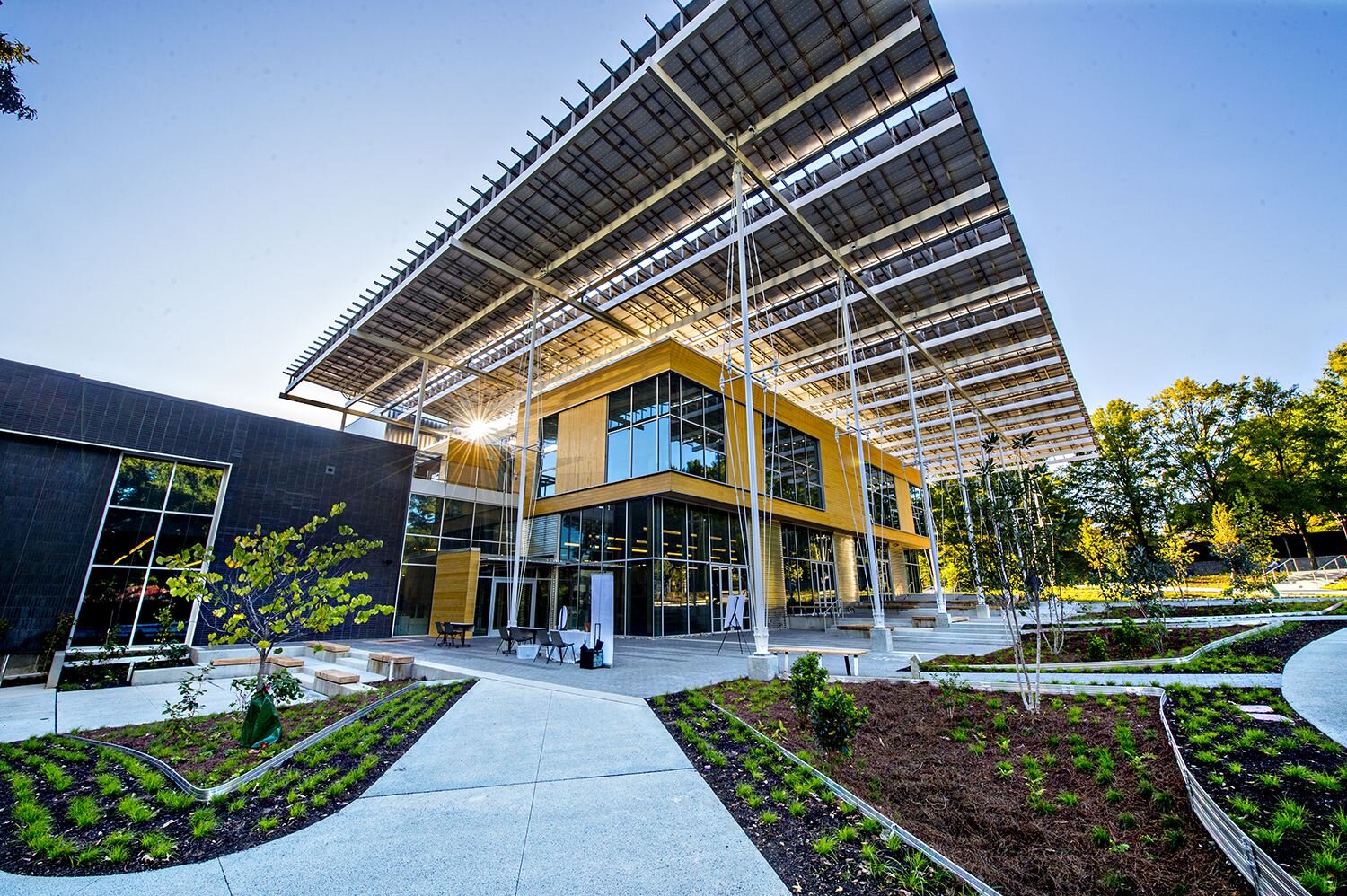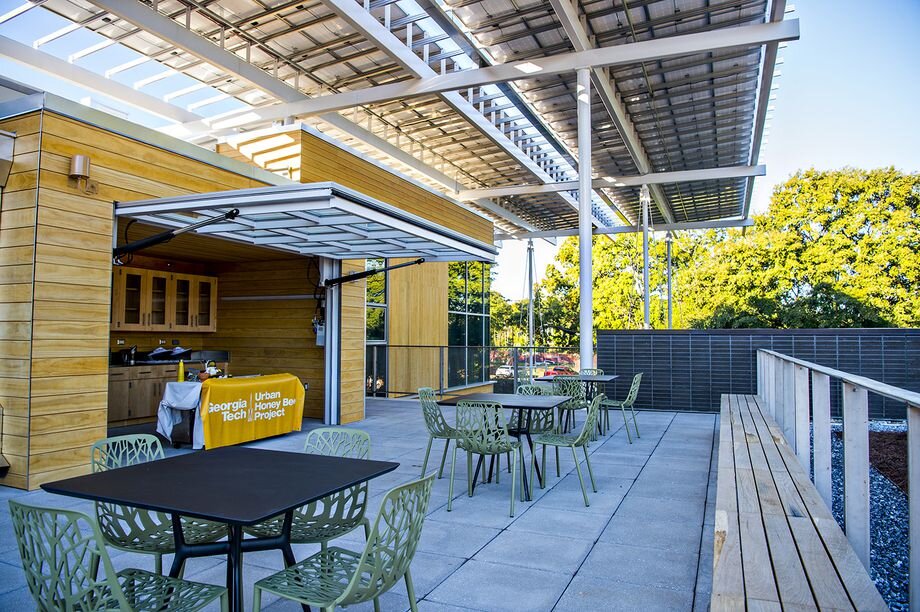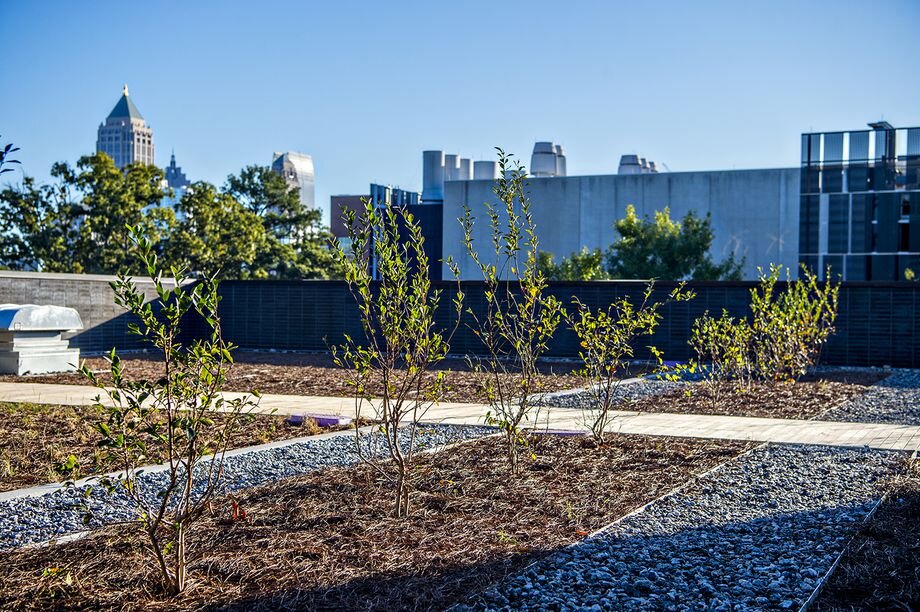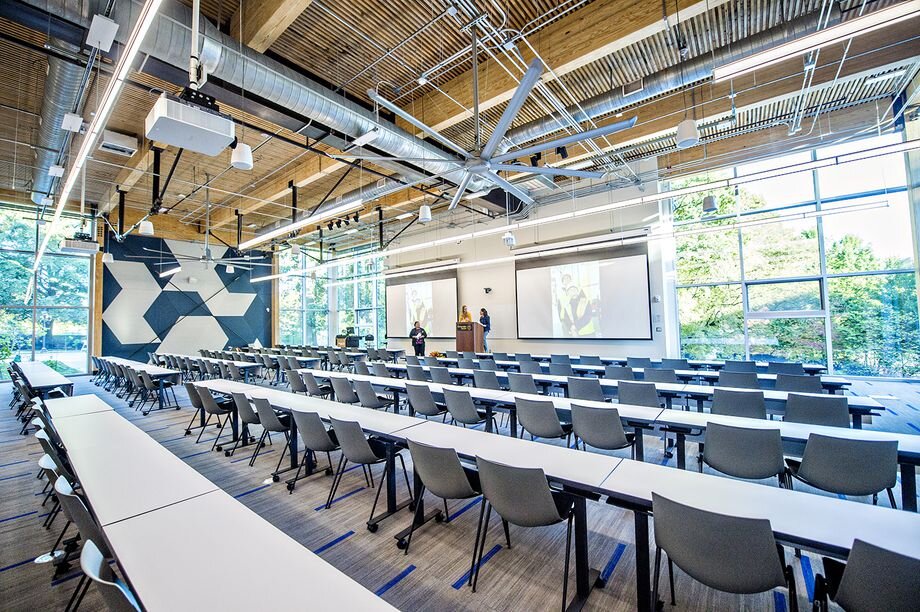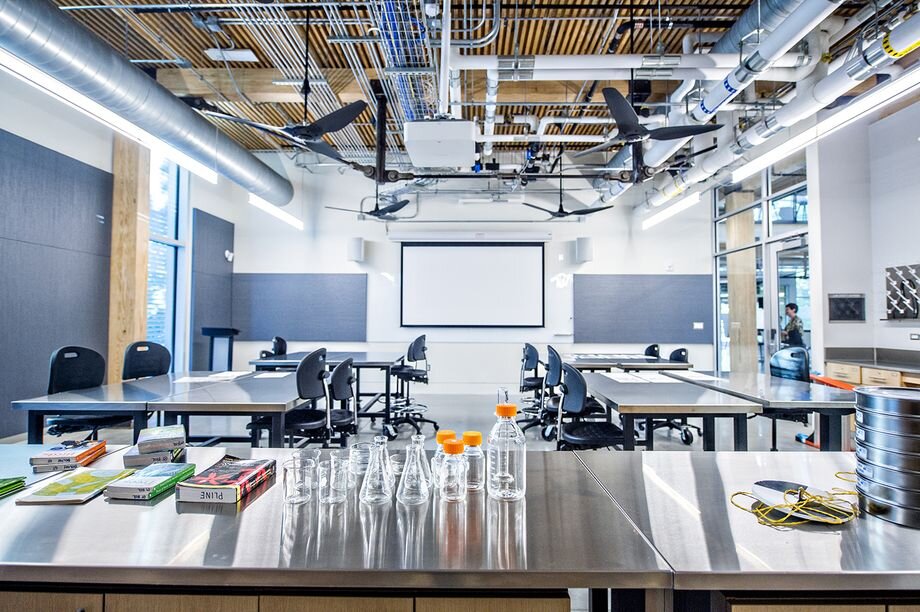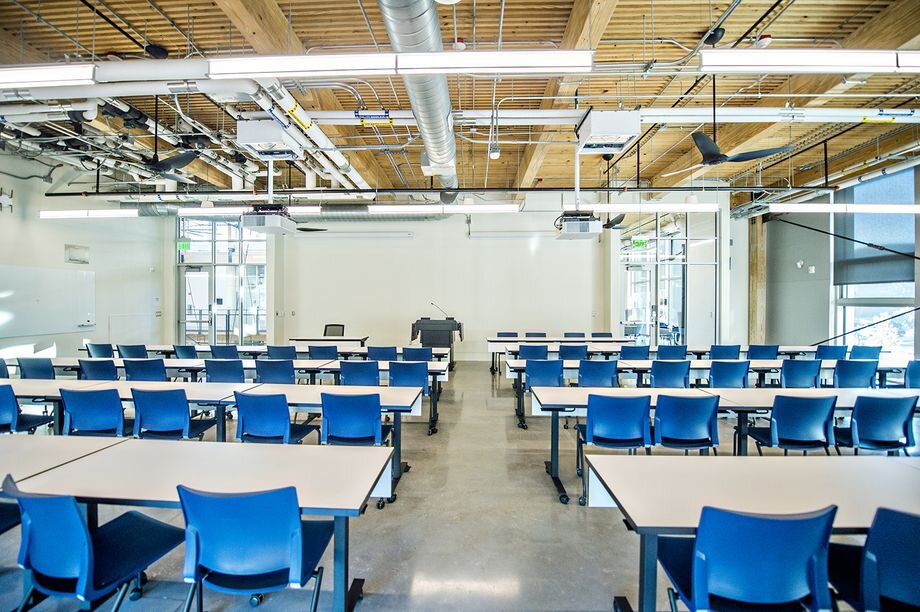t’sIt’s not every day the president of a major university stands before an auditorium packed to the walls with dignitaries and journalists, raises his arms like an inspired evangelist, points toward the restrooms, and extolls the virtues of using the toilet.
But such was the scene when Georgia Tech’s recently installed, excitable leader Dr. Ángel Cabrera helped lead dedication ceremonies in late October for The Kendeda Building for Innovative Sustainable Design—colloquially: “The Kendeda Building,” or “the Living Building”—a modern wonder amid Tech’s leafy campus that’s not satisfied with being merely the Southeast’s greenest structure.
Should project leaders succeed, the $30-million, grant-funded experiment will be the only fully certified Living Building south of Virginia Beach, southeast of suburban St. Louis, and east of Texas—and one of just 24 across the country. Before certification can happen, the Living Building Challenge, an international green-building program, will require the world’s most rigorous year-long process of performance evaluations. That gauntlet is expected to begin with spring semester classes, which will host everything from science to calculus at the new facility where Ferst Drive meets State Street. Compounding matters is Atlanta’s subtropical, often humid climate, where creating a comfortable, solar-powered, self-sustaining building not connected to city utilities was once thought impossible. Nothing like it has ever been attempted in this climate zone. Achieving the LBC stamp, in short, will require a logistical concert from the rooftop apiary and Big Ass Fans overhead (that’s the brand name) to complex heating and cooling systems in the floors. Oh, and toilets that don’t gulp but sip.
“You would not believe how excited we are about toilets in this building!” Cabrera was saying to the crowd, describing a structure so fresh it still smells like sawed wood, which the president calls his favorite place on campus. “Go and check out the toilet, and you’ll understand.”
A few moments later, Shan Arora, the Kendeda Building director hired by Tech to guide sustainability and programming efforts and lasso the prized certification, sounded equally amped at the lectern: “Constructing a Living Building in the South… people said it can’t be done,” said Arora. “We’re going to show the South, the Southeast, and the world that we can do it here.”
Four years ago, behind-the-scenes discussions began between officials with Tech and The Kendeda Fund—among metro Atlanta’s leading philanthropic investors, with a heart for social and ecological causes—in regards to an on-campus project that might “live” on its own. Kendeda Fund’s eventual $30 million grant covered everything from geotechnical testing to the custom furniture. It’s the agency’s largest single gift to date—and one of the biggest Tech has received in a history dating to the 1880s.
And then, in early 2018, a groundbreaking was held on what had been a humdrum parking lot, a 1.35-acre site next to one of campus’s largest old oaks. The goal: To create a building that collects all its own water, produces more electricity than it needs, and discards of waste in an ecologically responsible way.
Nearly two years later, Arora led Curbed Atlanta on a tour of the 47,000-square-foot results, all tailored to the South and surprising in their use of seemingly useless things.


